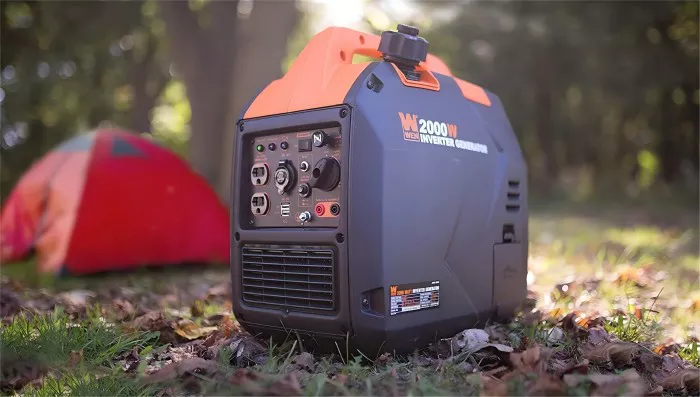Converting a diesel engine into a generator can be a rewarding project that provides a reliable source of power. This article will guide you through the process, offering detailed steps, tips, and considerations to ensure a successful conversion.
1. Understanding the Basics
1.1 Components Needed
To convert a diesel engine into a generator, you will need the following components:
Diesel engine (a used engine is often more cost-effective)
Alternator compatible with the engine
Fuel tank and fuel pump
Radiator and coolant
Exhaust manifold and muffler
Control panel with start/stop switches and gauges
Wiring and electrical connectors
Mounting frame and hardware
1.2 Tools Required
Wrenches and socket sets
Screwdrivers and pliers
Welding equipment (for assembling the metal frame)
Electrical testing tools
Safety equipment (gloves, goggles, etc.)
2. Preparing the Diesel Engine
2.1 Inspecting the Engine
Before starting the conversion, inspect the diesel engine thoroughly. Check for any wear and tear, leaks, or damaged components. Ensure that the engine is in good working condition to avoid future issues.
2.2 Cleaning and Servicing
Clean the engine and replace any worn-out parts. Perform a full service, including changing the oil, filters, and any necessary gaskets. This step ensures the engine runs smoothly once converted.
3. Setting Up the Alternator
3.1 Choosing the Right Alternator
Select an alternator that matches the power output requirements of your generator. Ensure the alternator is compatible with the engine’s RPM and torque specifications.
3.2 Mounting the Alternator
Mount the alternator to the engine using a suitable bracket. The alternator should be securely attached and aligned with the engine’s crankshaft pulley.
3.3 Connecting the Alternator
Connect the alternator to the engine’s crankshaft using a belt or coupling. Ensure the tension is appropriate to avoid slippage or excessive wear.
4. Installing the Fuel System
4.1 Fuel Tank Placement
Position the fuel tank near the engine, ensuring it is securely mounted and easily accessible. The tank should be elevated slightly to allow gravity-fed fuel delivery.
4.2 Fuel Pump and Lines
Install the fuel pump and connect it to the fuel tank and engine. Use appropriate fuel lines and clamps to ensure a secure and leak-free connection.
5. Setting Up the Cooling System
5.1 Radiator Installation
Install the radiator close to the engine, ensuring it has adequate airflow for cooling. Secure the radiator with brackets and connect it to the engine using coolant hoses.
5.2 Coolant Fill
Fill the cooling system with the appropriate coolant. Check for any leaks and ensure the radiator cap is securely in place.
6. Exhaust System Setup
6.1 Installing the Exhaust Manifold
Attach the exhaust manifold to the engine, ensuring a tight seal to prevent leaks. Use gaskets and bolts as needed.
6.2 Muffler and Exhaust Pipe
Connect the muffler to the exhaust manifold and extend the exhaust pipe away from the generator setup. This helps in reducing noise and directing fumes away from the working area.
7. Electrical Connections
7.1 Wiring the Control Panel
Install the control panel near the generator setup. Connect the engine’s electrical system to the control panel, including the start/stop switches, gauges, and indicators.
7.2 Alternator Wiring
Connect the alternator to the control panel and battery system. Ensure all electrical connections are secure and properly insulated.
see also: How to Operate Diesel Generator?
8. Mounting the Generator
8.1 Building the Frame
Construct a sturdy frame to mount the engine and alternator. Use metal tubing or angle iron for the frame and ensure it can support the weight of the components.
8.2 Securing the Components
Mount the engine and alternator onto the frame, securing them with bolts and brackets. Ensure the setup is stable and free from vibrations.
9. Testing and Calibration
9.1 Initial Testing
Start the engine and observe the generator’s performance. Check for any leaks, unusual noises, or vibrations. Ensure the alternator is generating the expected voltage and current.
9.2 Fine-Tuning
Adjust the tension of belts, alignment of components, and fuel/air mixture to optimize performance. Monitor the gauges and indicators for any anomalies.
Conclusion
Converting a diesel engine into a generator involves several steps, from preparing the engine and installing the alternator to setting up the fuel, cooling, and exhaust systems. By following this guide, you can create a reliable and efficient diesel generator to meet your power needs. Regular maintenance and inspections will ensure the longevity and performance of your homemade generator.
Related topics:
- How Much Diesel Is Needed to Run a Generator?
- Top 4 Portable Diesel Generator
- How Much Does It Cost to Run a Diesel Generator?

